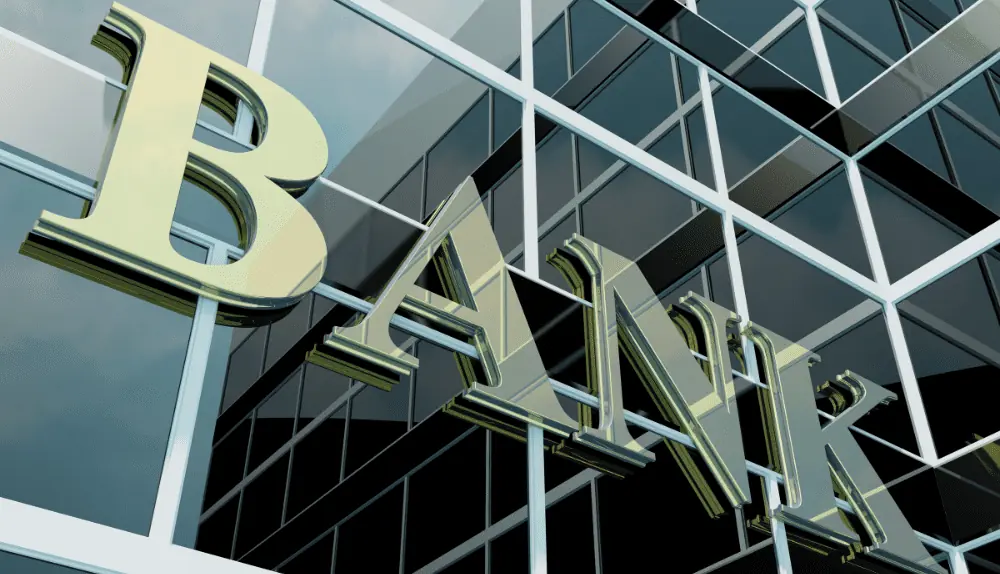In the fast-paced world of business, where fortunes can be made and lost in the blink of an eye, one of the greatest fears that keep entrepreneurs up at night is the possibility of a financial crisis leading to bank failures. We’ve witnessed the devastating impact such events can have on businesses, both large and small, leaving them vulnerable and struggling to survive in the aftermath. But fear not, for in this guide, we will unveil a strategic roadmap to protect your business from bank failures during a financial crisis.
By arming yourself with knowledge and implementing smart risk management techniques, you can fortify the foundations of your enterprise and navigate the treacherous waters of uncertainty with confidence. So, prepare to safeguard your business’s financial future as we delve into the essential strategies that will shield you from the stormy winds of bank failures.
What is a Bank Failure?

A bank failure refers to a situation where a financial institution, typically a bank, becomes insolvent and is unable to meet its financial obligations to depositors and creditors. In simpler terms, it is when a bank collapses due to severe financial distress, leading to its inability to fulfill its contractual obligations. This can occur for various reasons, such as mismanagement, excessive risk-taking, economic downturns, or a combination of factors. When a bank fails, it can have far-reaching consequences, affecting not only the bank itself but also its customers, shareholders, and the broader economy.
Depositors may lose access to their funds, businesses may face difficulties in obtaining credit, and confidence in the overall financial system can be shaken. Governments and regulatory bodies often intervene to manage the fallout and prevent systemic risks. Bank failures highlight the importance of robust risk management practices, effective regulation, and the need for businesses to be prepared for such contingencies to safeguard their interests.
How Do Banks Fail?
Bank failures can be disastrous, causing significant turmoil in the financial system and leaving businesses and individuals in a state of uncertainty. Understanding the factors contributing to bank failures is essential for safeguarding your business’s financial interests. Whether it’s due to mismanagement, economic downturns, lack of capital, regulatory non-compliance, or systemic risks, the consequences can be far-reaching.
By recognizing these risks and taking proactive measures, you can protect your business from the adverse effects of bank failures. In the following sections, we will explore the key reasons why banks fail and delve into the underlying causes and implications of each factor. By gaining insights into these dynamics, you will be better equipped to navigate through challenging times and shield your business from the fallout of bank failures.
Mismanagement and Poor Risk Assessment
Banks can fail due to mismanagement and poor risk assessment practices. This can involve making risky investments, extending loans to borrowers with a high likelihood of default, or inadequate monitoring of credit risks. When these risks materialize and result in significant losses, the bank’s financial health deteriorates, leading to potential failure.
Economic Downturns and Financial Crises
Banks are highly sensitive to economic conditions. During economic downturns or financial crises, businesses may struggle to repay their loans, leading to a rise in non-performing loans (NPLs). If the bank has substantial exposure to these troubled loans, it can suffer significant losses and face insolvency.
Lack of Sufficient Capital and Liquidity
Banks must maintain adequate capital and liquidity to ensure their stability and ability to meet depositor withdrawals and financial obligations. If a bank fails to maintain sufficient capital reserves or faces a sudden surge in withdrawal requests, it may experience liquidity problems and become unable to honor its obligations, ultimately resulting in failure.
Regulatory Non-Compliance and Legal Issues
Banks operate under strict regulations to ensure the stability and integrity of the financial system. Failure to comply with these regulations, such as engaging in fraudulent activities, money laundering, or violating capital adequacy requirements, can lead to regulatory penalties, loss of public trust, and even the revocation of the bank’s license.
Contagion and Systemic Risk
The failure of one bank can have a domino effect, triggering a chain reaction of financial instability. This contagion occurs when the failure of a bank causes a loss of confidence in the entire banking system, leading to depositors withdrawing funds from other banks and creating a liquidity crunch. Systemic risks can arise when banks are interconnected, relying on each other for funding, or when the failure of a major bank disrupts the overall financial infrastructure.
It’s important to note that these factors are not mutually exclusive and often interact with one another, amplifying the risk of bank failures. Effective risk management, strict regulatory oversight, and prudent lending practices are crucial to mitigate the likelihood and impact of bank failures.
Major Historical Bank Failure Events

The Great Depression (1929-1933)
The Great Depression was a severe worldwide economic downturn that resulted in numerous bank failures. The stock market crash of 1929 and subsequent economic collapse led to widespread business failures and high unemployment rates. The failure of thousands of banks during this period caused significant financial losses for depositors and contributed to the deepening economic crisis.
Savings and Loan Crisis (1980s-1990s)
The Savings and Loan (S&L) Crisis in the United States was a result of risky lending practices and inadequate regulatory oversight. Many S&L institutions made high-risk loans and investments, leading to massive losses. Ultimately, over 1,000 S&Ls failed, costing taxpayers billions of dollars in bailout funds.
Global Financial Crisis (2007-2008)
The Global Financial Crisis, triggered by the collapse of Lehman Brothers, was a pivotal event that caused a wave of bank failures worldwide. Banks had engaged in risky mortgage lending and securitization practices, which resulted in the subprime mortgage crisis. This led to a widespread credit freeze, severe liquidity problems, and the failure of several major financial institutions, such as Bear Stearns and Washington Mutual.
Eurozone Debt Crisis (2010-2014)
The Eurozone Debt Crisis affected several European countries, primarily Greece, Ireland, Portugal, and Spain. Banks in these countries faced significant losses due to exposure to sovereign debt and a decline in property values. As a result, several banks required government bailouts, while others faced mergers, acquisitions, or closures.
Icelandic Financial Crisis (2008-2011)
The Icelandic Financial Crisis was a result of a collapse in the country’s banking system. Icelandic banks had expanded rapidly, accumulating excessive debt and engaging in risky investments. When global credit markets froze, the banks were unable to refinance their debts, leading to their collapse. The crisis had a severe impact on the Icelandic economy and required an international bailout.
These historical bank failure events serve as reminders of the importance of prudent risk management, effective regulation, and the need for proactive measures to prevent or mitigate the devastating consequences of financial crises.
How To Protect Your Business From Bank Failures In Case of Financial Crisis

Safeguarding your business from the potential risks of bank failure is crucial for maintaining its financial stability and resilience. The consequences of a bank failure can be severe, impacting cash flow, access to funds, and overall business operations.
By implementing proactive strategies and taking necessary precautions, you can protect your business from the adverse effects of bank failures. In the following sections, we will explore key steps to safeguard your business, including diversifying banking relationships, maintaining cash reserves, and exploring alternative funding sources, among others. These measures can help fortify your business’s financial position and ensure its ability to navigate through challenging times.
Diversify Your Banking Relationships
Avoid relying on a single bank for all your financial needs. Diversify your banking relationships by spreading your funds across multiple reputable banks. This reduces the risk of losing all your funds in the event of a bank failure.
Conduct Regular Financial Health Checks
Keep a close eye on your business’s financial health. Regularly review your financial statements, cash flow, and profitability to identify any potential risks or warning signs. Promptly address any issues and take necessary actions to strengthen your financial position.
Maintain Adequate Cash Reserves
Build up cash reserves to provide a cushion during turbulent times. Having readily available cash can help your business weather periods of financial instability and avoid relying heavily on bank financing.
Establish Lines of Credit and Alternative Funding Sources
Explore options for securing lines of credit or establishing relationships with alternative funding sources such as venture capitalists, angel investors, or crowdfunding platforms. Having multiple funding sources can provide backup options in case of a bank failure.
Stay Informed and Engage Professional Advisors
Keep yourself updated on the financial landscape and market conditions that may impact your business. Seek guidance from financial advisors, accountants, or business consultants who can provide expert advice on risk management strategies and help navigate potential challenges.
Understand Deposit Insurance Coverage
Familiarize yourself with the deposit insurance coverage provided by your country’s regulatory authorities. This coverage often provides protection for a certain amount of deposits in case of a bank failure. Ensure your funds are within the insured limits to safeguard your business’s assets.
Monitor Bank Stability and Reputation
Regularly assess the stability and reputation of the banks you work with. Stay informed about their financial performance, capital adequacy ratios, and any news or events that could impact their stability. Choose banks with strong financial standings and a track record of reliability.
Develop a Contingency Plan
Prepare a contingency plan outlining the steps you would take in case of a bank failure. This plan should include alternative banking options, strategies for accessing funds, and how you would communicate with customers, suppliers, and employees to minimize disruptions.
Maintain Strong Internal Controls
Implement robust internal controls to safeguard your business’s finances. Have clear segregation of duties, regular audits, and strong oversight mechanisms to detect and prevent any fraudulent activities or mismanagement that could jeopardize your financial stability.
Remember, while these measures can help mitigate the risks of bank failure, they do not guarantee complete protection. It is essential to remain vigilant, adapt to changing circumstances, and be prepared to act swiftly and decisively to safeguard your business’s interests.
How to Limit Your Risk in the Event of Bank Failure?
When it comes to protecting your business from the risks associated with bank failures, proactive risk management is paramount. The potential consequences of a bank failure can have a significant impact on your business’s financial stability and operations. By implementing strategies to limit your risk exposure, such as diversifying banking relationships, understanding deposit insurance coverage, and maintaining adequate cash reserves, you can safeguard your business’s interests and navigate through potential bank failures with greater resilience. In the following sections, we will delve into key steps that you can take to minimize the risks and mitigate the potential impact of bank failures on your business.
Monitor Bank Stability and Performance
Stay informed about the financial health, stability, and reputation of the banks you work with. Regularly review their financial statements, capital adequacy ratios, and any news or indicators that could signal potential issues. This proactive monitoring allows you to assess and react to any warning signs promptly.
Understand Deposit Insurance Coverage
Familiarize yourself with the deposit insurance coverage provided by your country’s regulatory authorities. Deposit insurance typically protects a certain amount of deposits per account holder in case of a bank failure. Ensure your funds are within the insured limits to minimize potential losses.
Maintain Adequate Cash Reserves
Building and maintaining adequate cash reserves is crucial for limiting risk during bank failures. Having a reserve of liquid funds allows your business to continue operations, meet immediate financial obligations, and avoid relying solely on bank financing or credit lines.
Review and Update Contracts and Agreements
Review your contracts and agreements, particularly those related to financing, loans, and payment terms. Understand the provisions regarding bank failures, defaults, and alternative dispute resolution mechanisms. Ensure you have contingency plans and backup arrangements in place to minimize disruptions.
Maintain Strong Internal Controls
Implement robust internal controls to protect your business from potential financial risks. This includes regular audits, segregation of duties, and thorough oversight to detect and prevent any fraudulent activities or mismanagement that could jeopardize your financial stability.
Remember, risk mitigation is an ongoing process, and it’s essential to stay proactive, informed, and adaptable. Regularly assess and reassess your risk exposure, maintain strong financial management practices, and seek professional advice when necessary to effectively limit your business’s risk in the event of a bank failure.
What Should You Do if Your Bank Fails?
If your bank fails, it can be a stressful and concerning situation. However, there are steps you can take to navigate through this challenging time:
Stay Calm and Gather Information
Remain calm and gather as much information as possible about the situation. Check official announcements from the regulatory authorities or government agencies regarding the bank’s status and any available guidance for depositors.
Contact the Bank and Understand Your Rights
Reach out to the bank directly to gather information about the impact of the failure on your accounts and services. Understand your rights as a depositor, including the coverage provided by deposit insurance schemes and any potential reimbursement or compensation programs.
Assess the Impact on Your Finances
Evaluate the extent of your exposure to the failed bank. Determine the funds you have deposited and any outstanding loans or obligations you may have with the bank. This assessment will help you understand the potential financial impact on your business.
Identify Alternative Banking Options
Research and identify alternative banking institutions where you can transfer your accounts and funds. Consider reputable banks with strong financial stability, good customer service, and suitable products and services that meet your business’s needs.
Transfer Your Accounts and Funds
Open accounts with the alternative banking institution(s) you have chosen and initiate the process of transferring your funds and accounts from the failed bank. Follow the necessary procedures and provide the required documentation to facilitate a smooth transition.
Review and Update Your Financial Operations
Adjust your financial operations to accommodate the changes resulting from the bank’s failure. Update your records, payment systems, and any automated transactions to ensure a seamless continuation of your business operations.
Seek Professional Advice
Consult with financial advisors, accountants, or legal professionals who specialize in dealing with bank failures. They can provide guidance on the best course of action based on your specific circumstances and assist you in navigating any legal or regulatory processes.
Maintain Open Communication
Stay in communication with your customers, suppliers, and employees to address any potential disruptions caused by the bank’s failure. Provide updates and reassurance about your business’s financial stability and the measures you are taking to ensure continuity.
Remember, the specific steps to take will depend on the regulations and support mechanisms in your jurisdiction. It is advisable to seek personalized advice and follow the guidance provided by the relevant authorities during a bank failure situation.
Final Words
Protecting your business from the risks associated with bank failures is of utmost importance for its financial stability and long-term success. By implementing proactive strategies, such as diversifying banking relationships, maintaining adequate cash reserves, and exploring alternative funding sources, you can limit your exposure to potential bank failures.
Additionally, staying informed about the stability and performance of the banks you work with, understanding deposit insurance coverage, and developing a comprehensive contingency plan are essential steps to mitigate the impact of a bank failure on your business. Remember, risk mitigation is an ongoing process, and it requires vigilance, adaptability, and a thorough understanding of your business’s financial landscape. By staying proactive and seeking professional advice when needed, you can safeguard your business’s interests, maintain continuity, and navigate through challenging times with resilience.
Frequently Asked Questions (FAQs)
What is deposit insurance, and how does it protect my business in case of a bank failure?
Deposit insurance is a system provided by regulatory authorities to protect depositors' funds in the event of a bank failure. It typically covers a certain amount per depositor, per bank. In case of a bank failure, the insurance scheme reimburses depositors up to the insured limit, helping to safeguard your business's funds.
Can I spread my business's funds across multiple banks to reduce the risk of bank failure?
Yes, spreading your business's funds across multiple reputable banks can help diversify your risk and reduce the potential impact of a single bank failure. By maintaining accounts in different banks, you decrease the concentration risk and increase the likelihood of having access to funds in case one bank fails.
How can I stay informed about the stability of the banks I work with?
Stay updated on the stability of the banks by regularly monitoring their financial statements, capital adequacy ratios, and any news or indicators that could impact their stability. Additionally, regulatory authorities and financial publications often provide assessments and ratings of banks, which can be useful in assessing their stability.
What steps should I take if my bank fails?
If your bank fails, it is important to stay calm and gather information. Contact the bank to understand the impact on your accounts and services and assess the financial implications for your business. Identify alternative banking options, transfer your accounts and funds, and adjust your financial operations accordingly. Seek professional advice to navigate any legal or regulatory processes and maintain open communication with stakeholders.
Are there any precautions I can take to mitigate the risk of a bank failure?
Yes, several precautions can help mitigate the risk of a bank failure. These include diversifying your banking relationships, maintaining adequate cash reserves, exploring alternative funding sources, regularly monitoring bank stability, and having a contingency plan in place to address potential bank failures.


